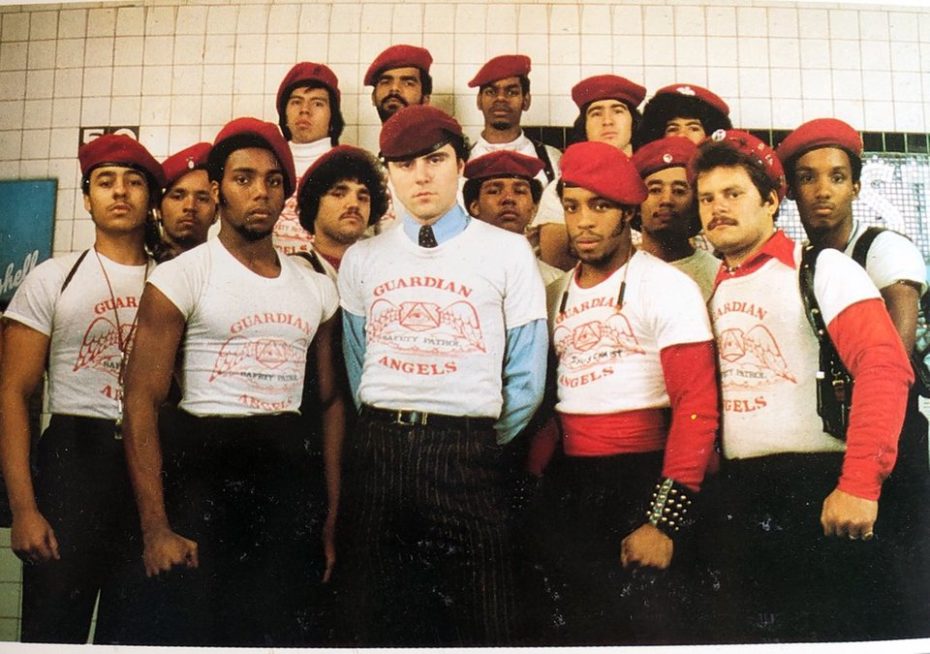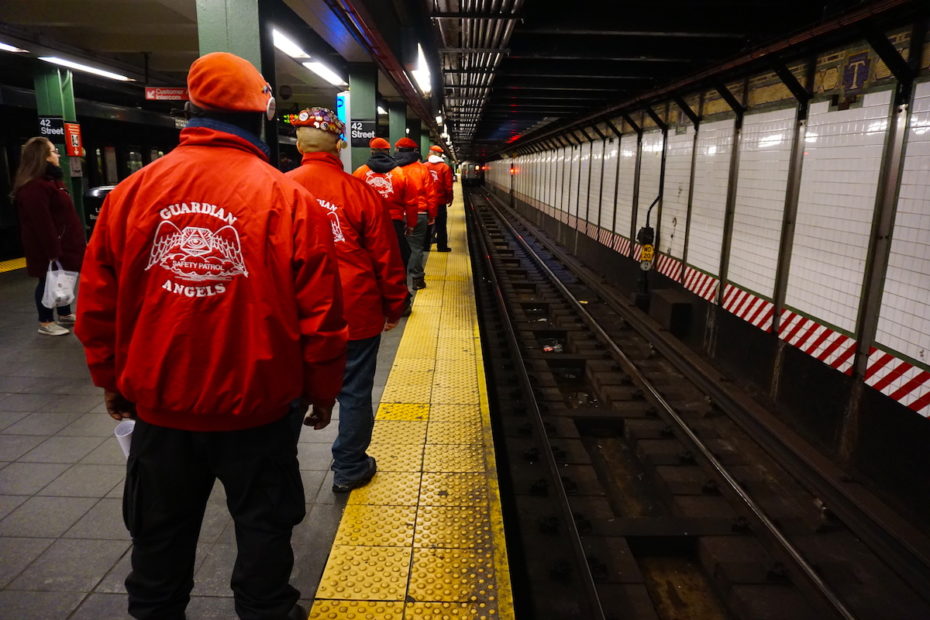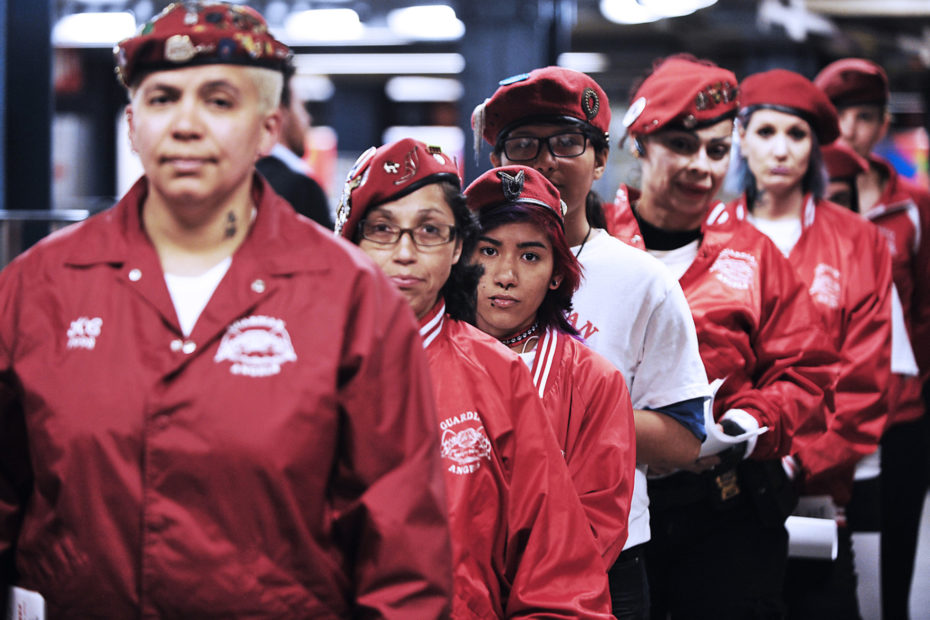Introduction
Nowadays, it seems that people have forgotten what New York City was like in the 1970s. According to Dyja (2021), in only five years, from 1969 to 1974, New York lost more than 500,000 jobs in manufacturing, which led to over a million households becoming dependent on social security by 1975. Almost at the same time, the number of burglaries and rapes tripled, the number of felony assaults and carjackings doubled, and the number of homicides increased by a thousand per year (Dyja, 2021). Moreover, particular neighborhoods were damaged to such an extent that they resembled war zones. Subway was one of the worst place for the city’s residents: people were attacked there all the time. However, someone was approached by a person in the red and white uniform – as pictured in Image 1 – it meant they were going to be safe. A New York City-based group, the Guarding Angels have been creating safety patrols for more than forty years now, and their contributions to the public’s security can barely be under-appreciated.

The Guardian Angels
The Guardian Angels, a volunteer crime prevention organization, was founded in 1979 by a man named Curtis Sliwa. According to Khosid et al. (2021), Sliwa, a McDonald’s night-shift manager at the time, was concerned about New York’s crime problem. Having established headquartered in the Hell’s Kitchen area, Sliwa, along with twelve other founding members, started patrolling Times Square and the “Muggers’ Express” subway route (Hillyer, R., 2017). Handy (2017) states that, since then, the organization’s recruits have become street icons for guarding subway cars, – as can be seen in Image 2 – intimidating chain-snatchers, making occasional arrests, and irritating the police. According to Dyja (2021), over the course of three decades, the Guardian Angels units appeared in a number of states, including Canada, England, Poland, Japan, Brazil, and Puerto Rico. Former New York City mayor, Edward Koch, is reported to being dismissive of the Angels as of vigilantes at first; as per Handy (2021), many still are. Others, by contrast, find that the organization advocates for city safety and empowers citizens to take control of their surroundings.

The Angels Today
‘Advocates’, not ‘advocated’; the Guardian Angels still exist and are very much in operation. When crime levels in New York City fell in the 1990s, it seemed that the public no longer needed them. However, crime is never fully absent, and according to Handy (2021), to most New Yorkers the Angels’ red and white uniform has always been a very pleasant sight. Fight against evil still continues, and in the 21st century, at the height of the #MeToo age, it includes confrontation of sexual predators. This is a mission assigned to a new all-female Angels patrol unit, known as Perv Busters.
Perv Busters
The Perv Busters initiative was launched by the Guarding Angels in 2016, with its name being inspired by the iconic supernatural comedy film Ghostbusters. The MNC Editorial Team (2019) reports that Mary – nicknamed KC – was “specifically approached” by Sliwa “to lead that effort” when there was an increase in sexual harassment crimes a couple of years prior. In 2019, Sliwa stated that, since the initiative’s start, Perv Busters – shown in Image 3 – had documented around 150 assault cases and had helped about a dozen more (The MNC Editorial Team, 2019). The Guardian Angels want to not simply move forward, but to evolve; to remain authentic and uphold their values, but to be aware of who might particularly need help and provide it. Each member of the organization seems to be a testimony to that – including KC’s Perv Busters, who are still active today.

Conclusion
In conclusion, the Guardian Angels, having emerged more than 40 years ago, have become an inevitable part of the New York City’s civic life. The group’s members believe that a community’s problems cannot be solved by police forces alone, and cooperate to combat street crime and address their community’s issues. Opinions on the organization’s methods and approaches vary, but their intention to make the world a better place are certainly admirable.
References
Dyja, T. (2021). New York, New York, New York: Four decades of success, excess, and transformation. Simon & Schuster.
Handy, B. (2021). Back to the Eighties: Crime, yucky subways, and the Guardian Angels! The New York Times. Web.
Hillyer, R. (2017). The Guardian Angels: Law and order and citizen policing in New York City.Journal of Urban History, 43(6), 886-914. Web.
Khosid, J., Advincula, D., Vishahan, A., Hebbatam, A., Akoğlu, E. N., Ergin, F. Y.,… & Mahanand, A. (2021). NYC post primary policy analysis.International Socioeconomics Laboratory. Web.
The MNC Editorial Team. (2019). In the shadows with NYC’s self-styled Guardian Angels.Messy Nessy Chic. Web.